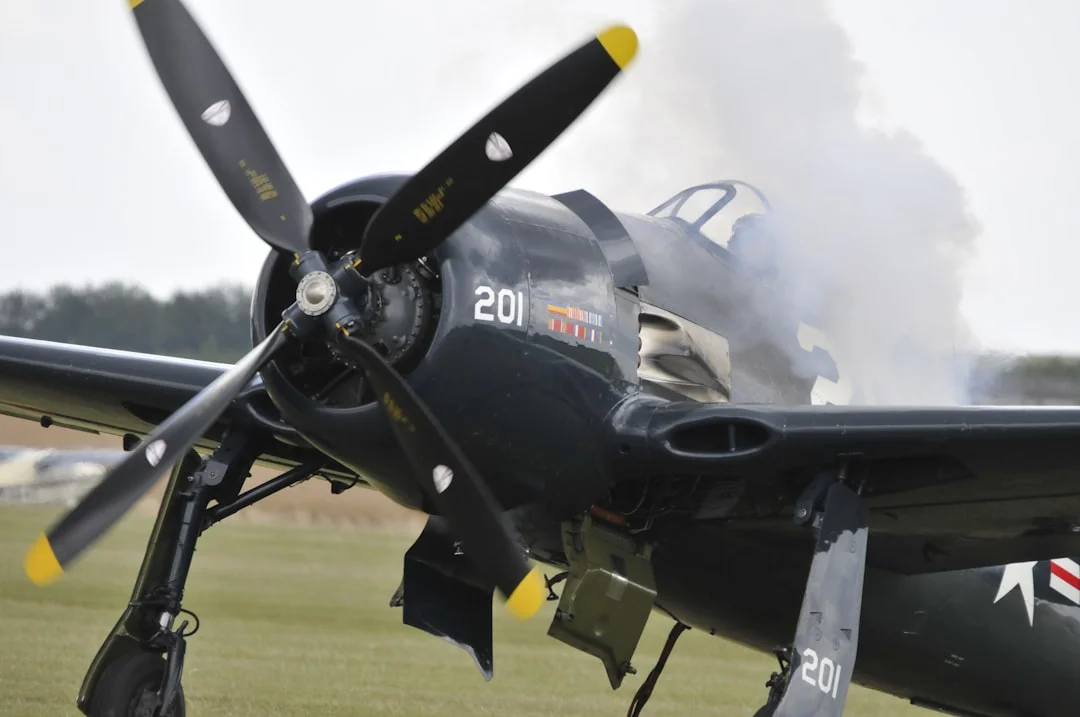Contents
- 1 How to Interpret the Course Deviation Indicator on Cessna 172
- 2 The Technical Significance of Course Deviation Indicator on Cessna 172
- 3 Course Deviation Indicator in Cessna 172 Instrument Panel
- 4 How to Interpret the Course Deviation Indicator on Cessna 172
- 5 The Technical Significance of Course Deviation Indicator on Cessna 172
- 6 Course Deviation Indicator in Cessna 172 Instrument Panel
- 7 How to Interpret the Course Deviation Indicator on Cessna 172
- 8 The Technical Significance of Course Deviation Indicator on Cessna 172
How to Interpret the Course Deviation Indicator on Cessna 172
Interpreting the Course Deviation Indicator on the Cessna 172 involves understanding the needle’s position relative to the center and the accompanying TO/FROM indications. When the needle is centered and the TO/FROM flag shows TO, the aircraft is flying directly towards the VOR station or waypoint along the selected course. If the TO/FROM flag indicates FROM and the needle is centered, the aircraft is flying away from the station along the selected course.
A deflection of the needle to the right means the aircraft is to the left of the desired course and needs to turn right to correct its path. Conversely, a deflection to the left indicates the aircraft is to the right of the course and should turn left. The magnitude of needle deflection indicates how far the aircraft is off course. Pilots must continuously monitor and adjust to keep the needle centered for precise navigation. Understanding these indications is essential for executing instrument approaches and maintaining situational awareness during IFR flight.
The Technical Significance of Course Deviation Indicator on Cessna 172
The Course Deviation Indicator is a fundamental avionics component with quantifiable technical specifications in the Cessna 172. It typically operates with a sensitivity of ±10 degrees, providing pilots with 2-degree increments marked by the needle’s deviation dots. This level of precision allows for effective course tracking in diverse flight conditions. The CDI receives its signals from radio navigation aids, processed through the aircraft’s nav receivers, translating radio frequencies into lateral position information.
Integration with GPS systems in more modern Cessna 172 variants enhances the CDI’s functionality. GPS-based Course Deviation Indicators provide higher accuracy, often displaying course deviation within tenths of a degree. This integration results in smoother navigation and better lateral guidance, especially during complex approaches. The technological reliability and simplicity of the CDI make it an indispensable instrument in the Cessna 172, contributing significantly to overall flight safety and navigational efficiency.
For more detailed technical information about avionics and CDI operation in small aircraft like the Cessna 172, you can visit the FAA’s official [Aeronautical Information Manual](https://www.faa.gov/air_traffic/publications/atpubs/aim_html/chap1_section1.html).
For More: What is PPL on Cessna 172? (Private Pilot License)
Course Deviation Indicator in Cessna 172 Instrument Panel
The Course Deviation Indicator is located prominently on the Cessna 172’s primary flight instrument panel, usually embedded within the Horizontal Situation Indicator (HSI) or as a standalone instrument in older models. The indicator consists of a vertical needle that moves left and right to show course deviation, a course selector knob to set the desired course, and a TO/FROM flag to indicate the direction of the VOR station relative to the aircraft’s position.
On the Cessna 172, the CDI needle deflects according to inputs from navigation receivers. When tuned to a VOR station, the CDI sensitivity corresponds to ±10 degrees of course deviation. Each dot on the instrument’s scale equals 2 degrees. In more advanced setups integrating GPS or an HSI, the CDI can display enhanced course accuracy, improving navigation precision within 1 to 2 degrees. Pilots use the course selector to dial in the desired radial or GPS course, ensuring the CDI reflects accurate lateral positioning relative to the flight path.
How to Interpret the Course Deviation Indicator on Cessna 172
Interpreting the Course Deviation Indicator on the Cessna 172 involves understanding the needle’s position relative to the center and the accompanying TO/FROM indications. When the needle is centered and the TO/FROM flag shows TO, the aircraft is flying directly towards the VOR station or waypoint along the selected course. If the TO/FROM flag indicates FROM and the needle is centered, the aircraft is flying away from the station along the selected course.
A deflection of the needle to the right means the aircraft is to the left of the desired course and needs to turn right to correct its path. Conversely, a deflection to the left indicates the aircraft is to the right of the course and should turn left. The magnitude of needle deflection indicates how far the aircraft is off course. Pilots must continuously monitor and adjust to keep the needle centered for precise navigation. Understanding these indications is essential for executing instrument approaches and maintaining situational awareness during IFR flight.
The Technical Significance of Course Deviation Indicator on Cessna 172
The Course Deviation Indicator is a fundamental avionics component with quantifiable technical specifications in the Cessna 172. It typically operates with a sensitivity of ±10 degrees, providing pilots with 2-degree increments marked by the needle’s deviation dots. This level of precision allows for effective course tracking in diverse flight conditions. The CDI receives its signals from radio navigation aids, processed through the aircraft’s nav receivers, translating radio frequencies into lateral position information.
Integration with GPS systems in more modern Cessna 172 variants enhances the CDI’s functionality. GPS-based Course Deviation Indicators provide higher accuracy, often displaying course deviation within tenths of a degree. This integration results in smoother navigation and better lateral guidance, especially during complex approaches. The technological reliability and simplicity of the CDI make it an indispensable instrument in the Cessna 172, contributing significantly to overall flight safety and navigational efficiency.
For more detailed technical information about avionics and CDI operation in small aircraft like the Cessna 172, you can visit the FAA’s official [Aeronautical Information Manual](https://www.faa.gov/air_traffic/publications/atpubs/aim_html/chap1_section1.html).
For More: What is PPL on Cessna 172? (Private Pilot License)
The Course Deviation Indicator (CDI) on the Cessna 172 is a critical navigational instrument that helps pilots maintain their desired flight course. This instrument visually displays the aircraft’s lateral position relative to a specific navigation course, typically set by a VOR (VHF Omnidirectional Range) station or GPS waypoint. Understanding what is Course Deviation Indicator on Cessna 172 is essential for both student pilots and experienced aviators because it directly impacts flight accuracy and safety during cross-country and instrument flight rules (IFR) operations.
In the Cessna 172, the CDI needle moves left or right to indicate deviation from the selected course. The needle’s position corresponds to a deviation of up to 10 degrees from the course centerline, with each dot on the indicator representing 2 degrees of course deviation. When the needle is centered, the aircraft is precisely on course. Pilots use the CDI to make timely and accurate course corrections during navigation.
Course Deviation Indicator in Cessna 172 Instrument Panel
The Course Deviation Indicator is located prominently on the Cessna 172’s primary flight instrument panel, usually embedded within the Horizontal Situation Indicator (HSI) or as a standalone instrument in older models. The indicator consists of a vertical needle that moves left and right to show course deviation, a course selector knob to set the desired course, and a TO/FROM flag to indicate the direction of the VOR station relative to the aircraft’s position.
On the Cessna 172, the CDI needle deflects according to inputs from navigation receivers. When tuned to a VOR station, the CDI sensitivity corresponds to ±10 degrees of course deviation. Each dot on the instrument’s scale equals 2 degrees. In more advanced setups integrating GPS or an HSI, the CDI can display enhanced course accuracy, improving navigation precision within 1 to 2 degrees. Pilots use the course selector to dial in the desired radial or GPS course, ensuring the CDI reflects accurate lateral positioning relative to the flight path.
How to Interpret the Course Deviation Indicator on Cessna 172
Interpreting the Course Deviation Indicator on the Cessna 172 involves understanding the needle’s position relative to the center and the accompanying TO/FROM indications. When the needle is centered and the TO/FROM flag shows TO, the aircraft is flying directly towards the VOR station or waypoint along the selected course. If the TO/FROM flag indicates FROM and the needle is centered, the aircraft is flying away from the station along the selected course.
A deflection of the needle to the right means the aircraft is to the left of the desired course and needs to turn right to correct its path. Conversely, a deflection to the left indicates the aircraft is to the right of the course and should turn left. The magnitude of needle deflection indicates how far the aircraft is off course. Pilots must continuously monitor and adjust to keep the needle centered for precise navigation. Understanding these indications is essential for executing instrument approaches and maintaining situational awareness during IFR flight.
The Technical Significance of Course Deviation Indicator on Cessna 172
The Course Deviation Indicator is a fundamental avionics component with quantifiable technical specifications in the Cessna 172. It typically operates with a sensitivity of ±10 degrees, providing pilots with 2-degree increments marked by the needle’s deviation dots. This level of precision allows for effective course tracking in diverse flight conditions. The CDI receives its signals from radio navigation aids, processed through the aircraft’s nav receivers, translating radio frequencies into lateral position information.
Integration with GPS systems in more modern Cessna 172 variants enhances the CDI’s functionality. GPS-based Course Deviation Indicators provide higher accuracy, often displaying course deviation within tenths of a degree. This integration results in smoother navigation and better lateral guidance, especially during complex approaches. The technological reliability and simplicity of the CDI make it an indispensable instrument in the Cessna 172, contributing significantly to overall flight safety and navigational efficiency.
For more detailed technical information about avionics and CDI operation in small aircraft like the Cessna 172, you can visit the FAA’s official [Aeronautical Information Manual](https://www.faa.gov/air_traffic/publications/atpubs/aim_html/chap1_section1.html).
For More: What is PPL on Cessna 172? (Private Pilot License)




